A.G. de Bruyen Fives-Lille
Rare French Art Deco Barbotine Vase - A.G. de Bruyen Fives-Lille - c1890s
Rare French Art Deco Barbotine Vase - A.G. de Bruyen Fives-Lille - c1890s
Couldn't load pickup availability
Some pieces seem to whisper stories of their past, and this breathtaking barbotine vase is one of them. Crafted by A.G. de Bruyen in Fives-Lille in the 1890s, it embodies perfectly the elegance and natural inspiration of the Art Nouveau movement. The deep olive-green glaze sets a dramatic backdrop for the delicately hand-painted pink flowers—perhaps clematis—cascading gracefully down its surface.
I discovered this rare treasure at the renowned Rue de Bretagne flea market in Paris, a place brimming with charm and history. Holding it in my hands, I couldn’t help but marvel at the craftsmanship and artistry that A.G. de Bruyen brought to every piece. This French faïencerie, based in the industrial heart of Fives-Lille, was celebrated for its exquisite barbotine work—each piece a tribute to nature and its fleeting beauty.
While its origins are steeped in history, this vase feels timeless. Whether you display it on its own or fill it with fresh blooms, it has a way of capturing attention and adding a touch of poetic grace to any space. A true collector’s item, brimming with character and stories waiting to unfold in its next chapter.
- Material: Majolica / Barbotine
- Style: Art Nouveau / Jugendstil
- Technique: Hand-glazed
- Place of Origin: France
- Date of Manufacture: 1890s
- Condition: Good condition, one small chip at the upper rim
Dimension:
Height: 23 cm | 9 in
Diameter: 10.5 cm | 4.1 in
Share
- Worldwide Shipping
- Secure Packaging
- Loving Curation
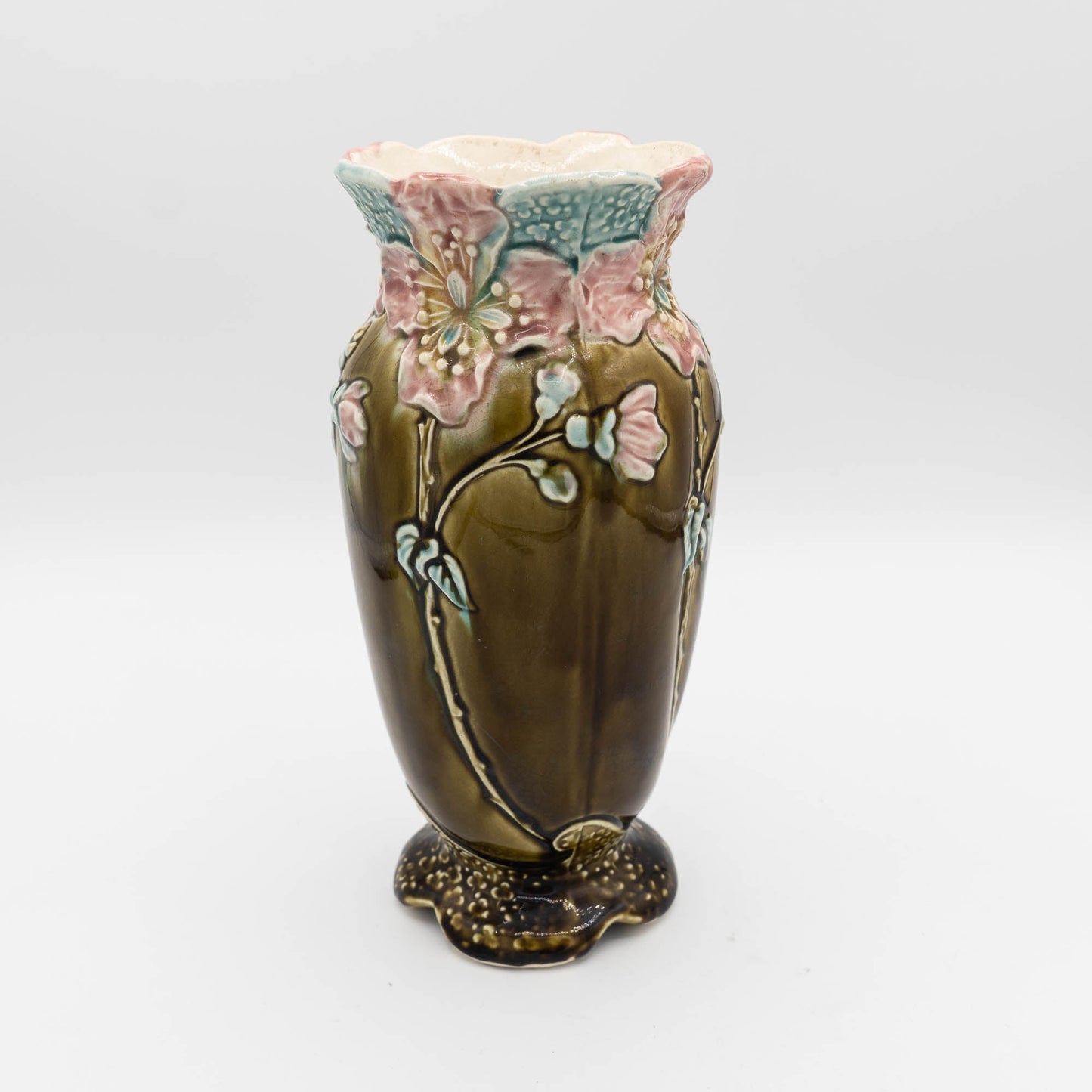
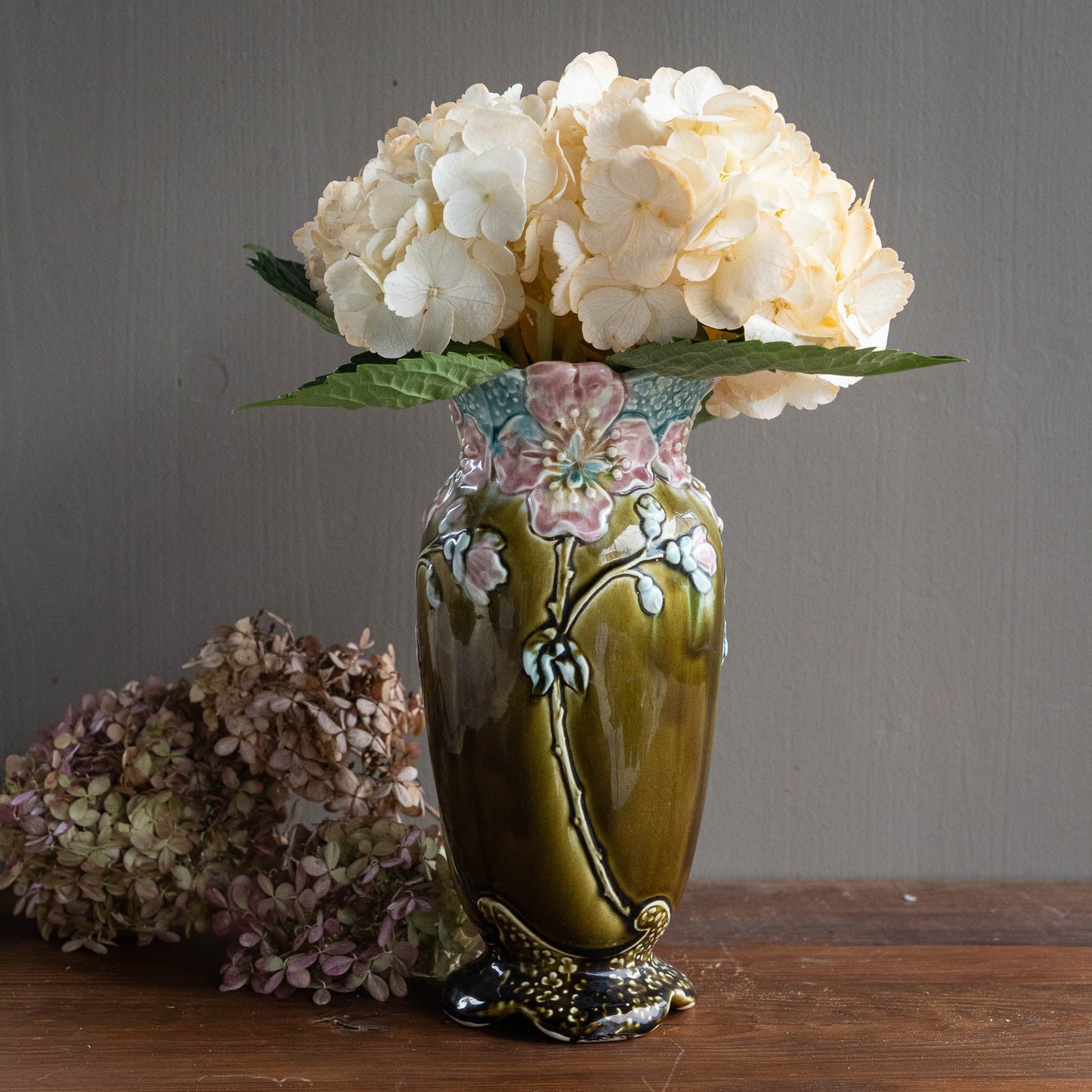
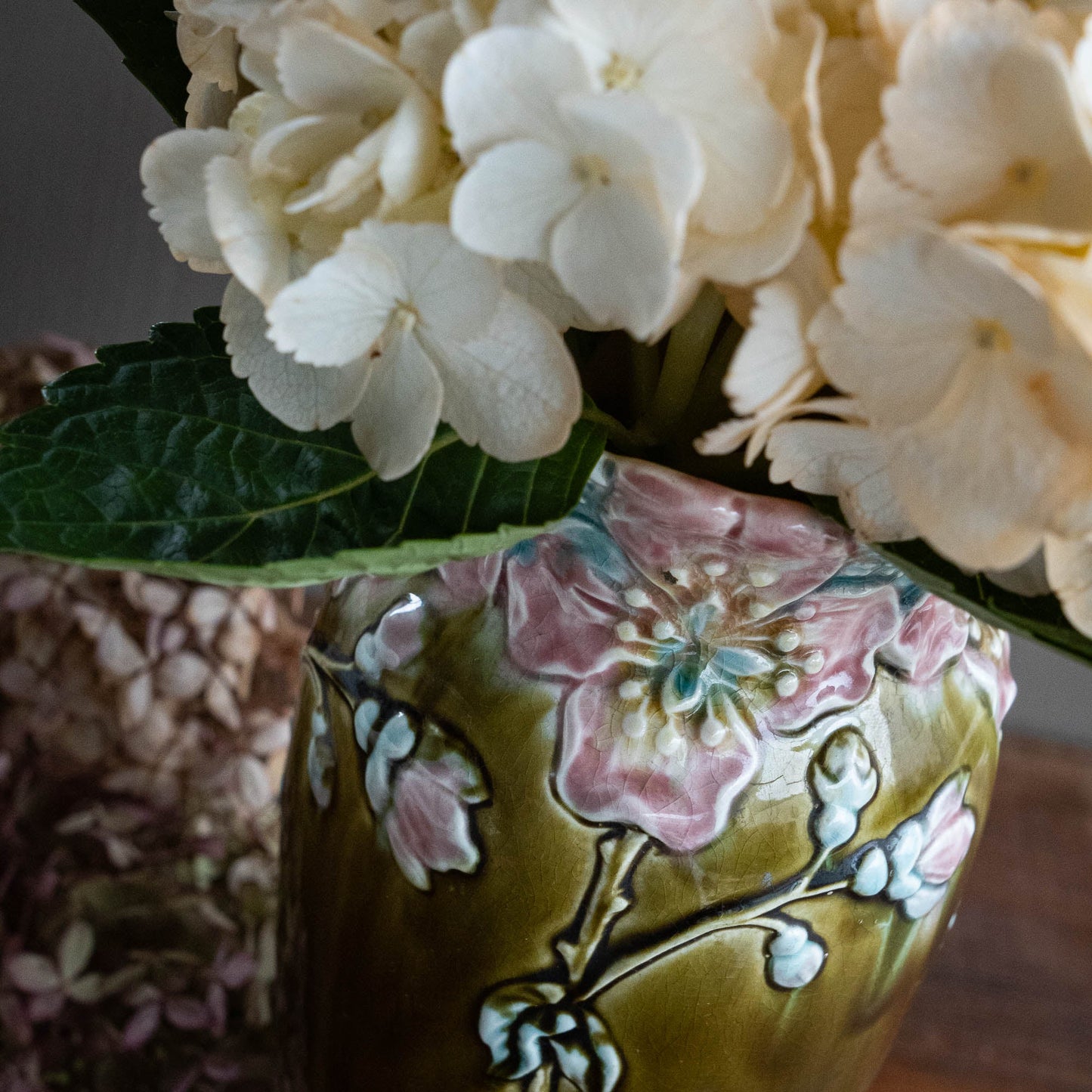
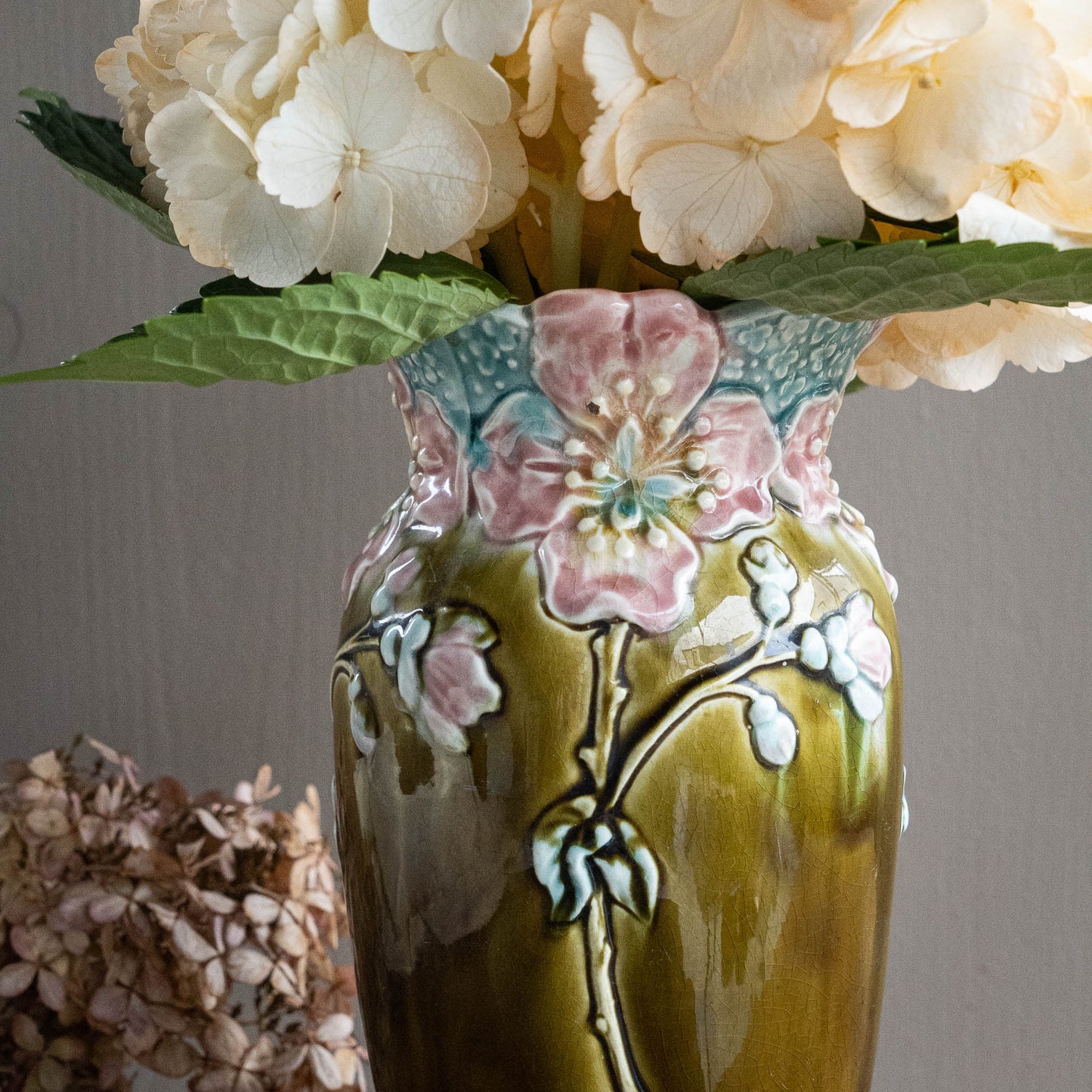
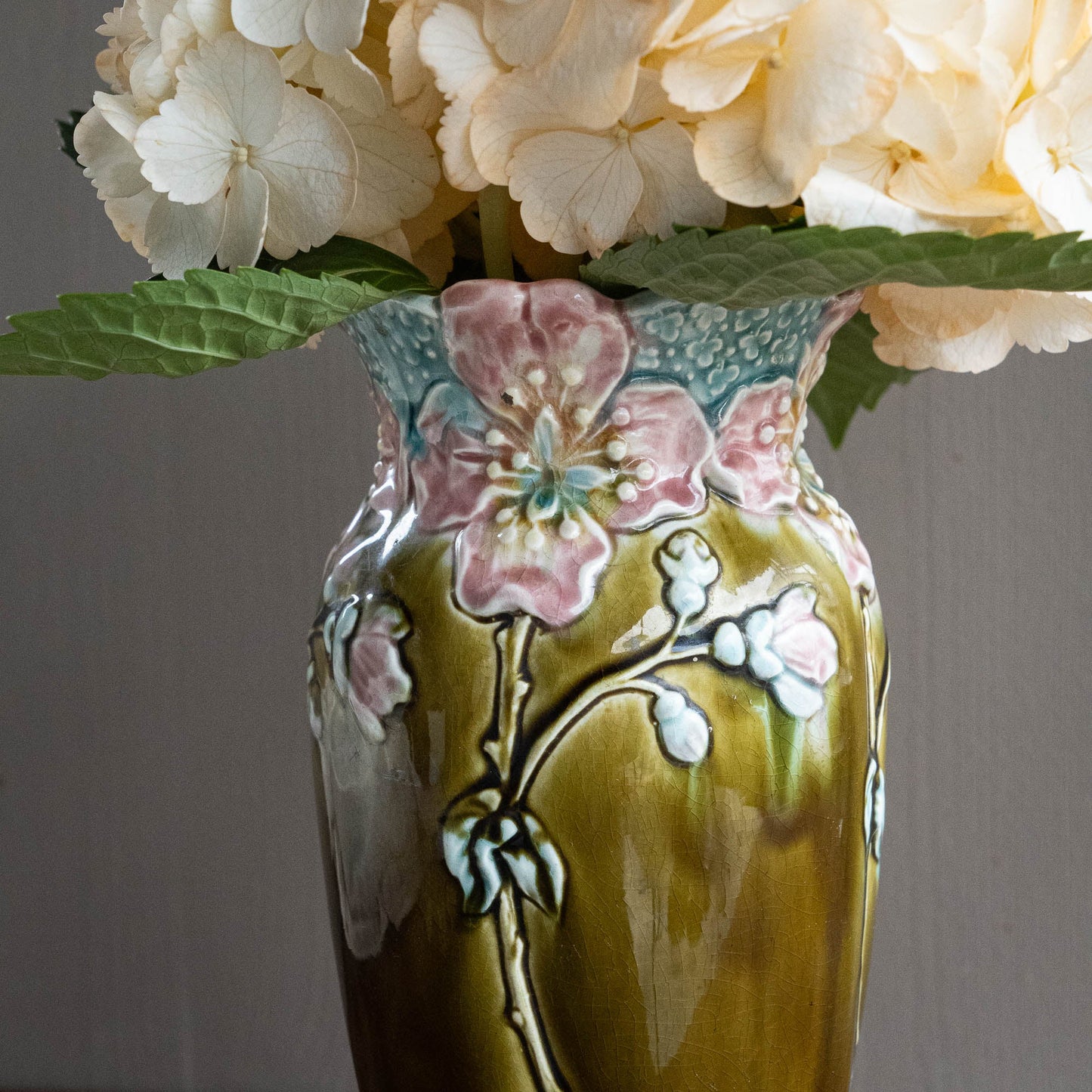
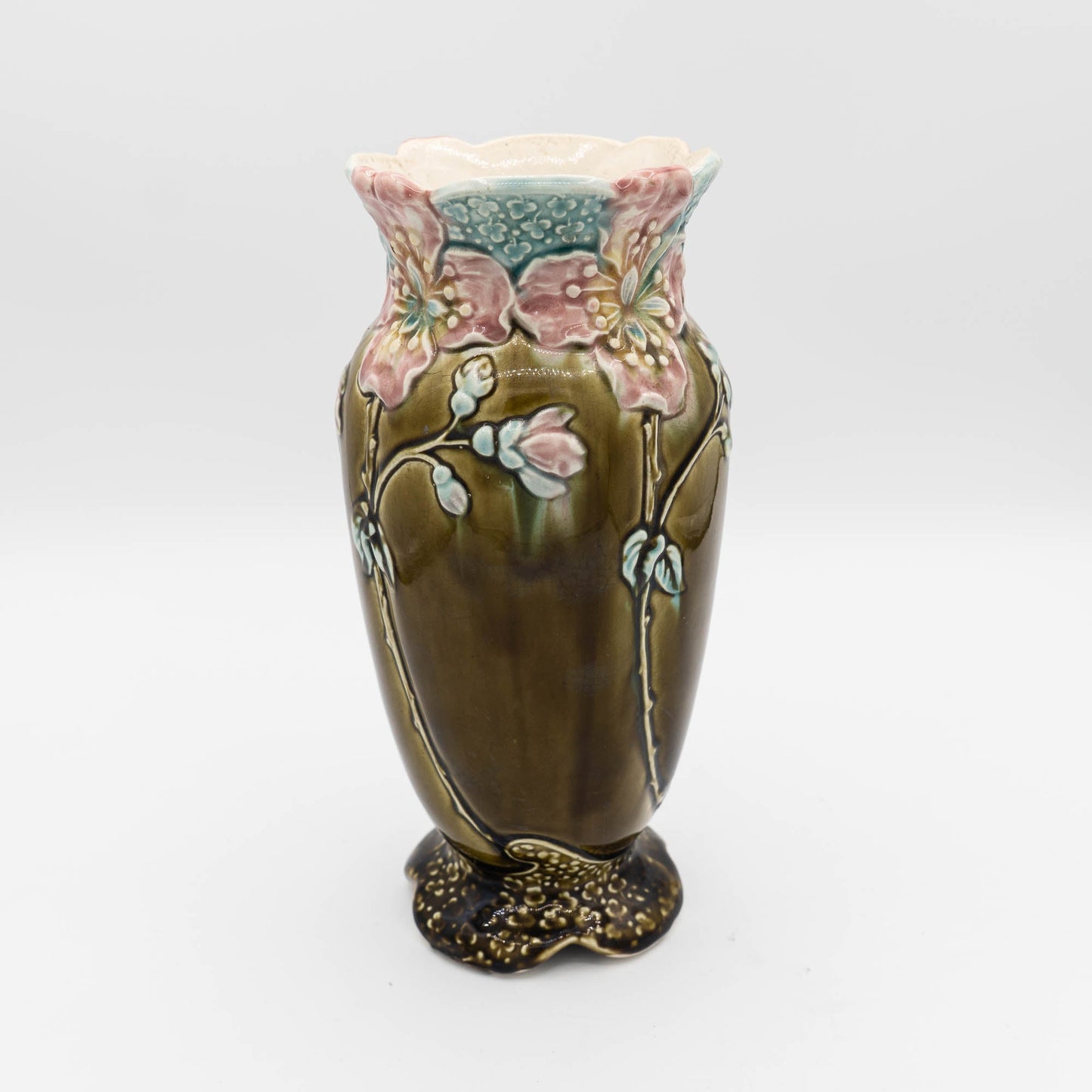
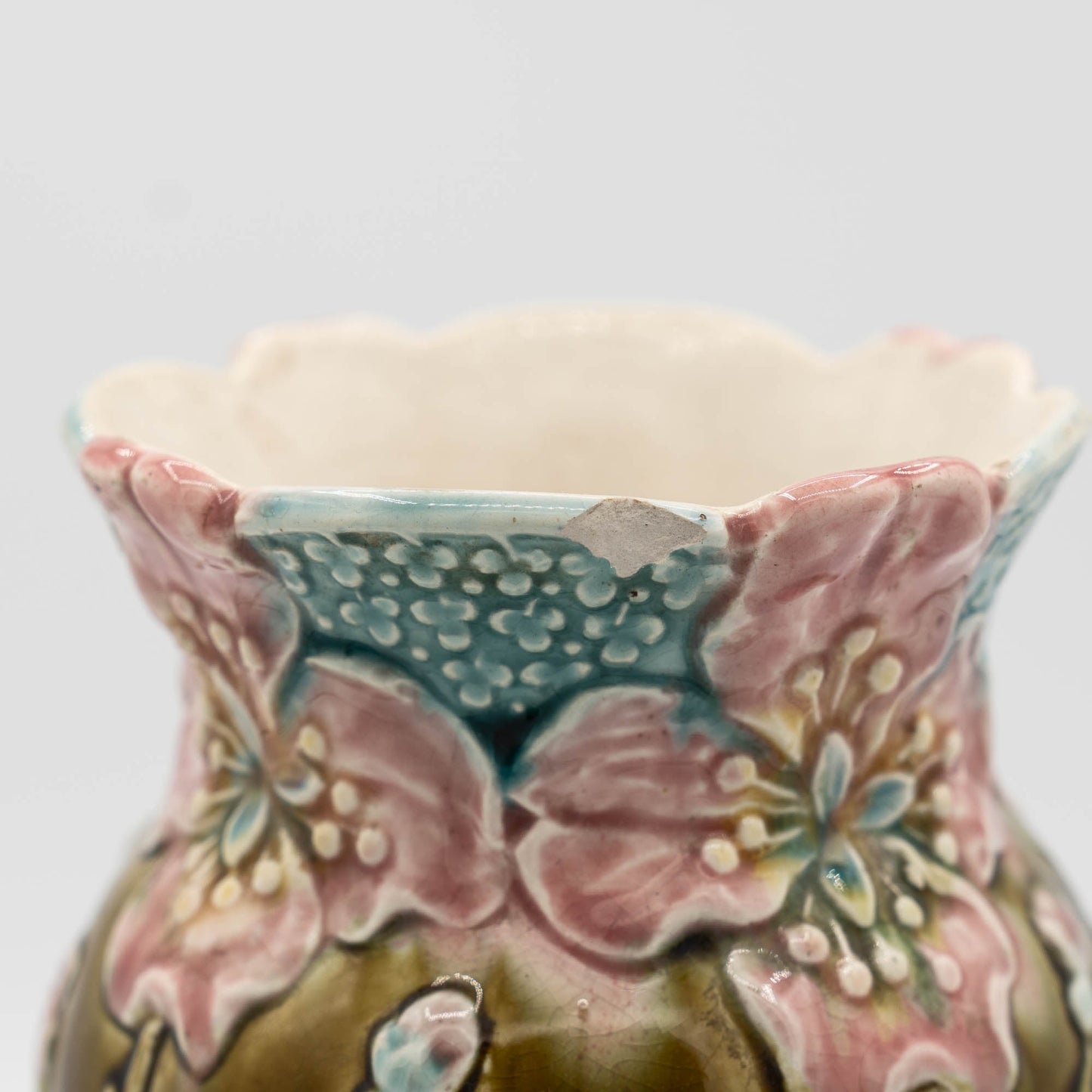
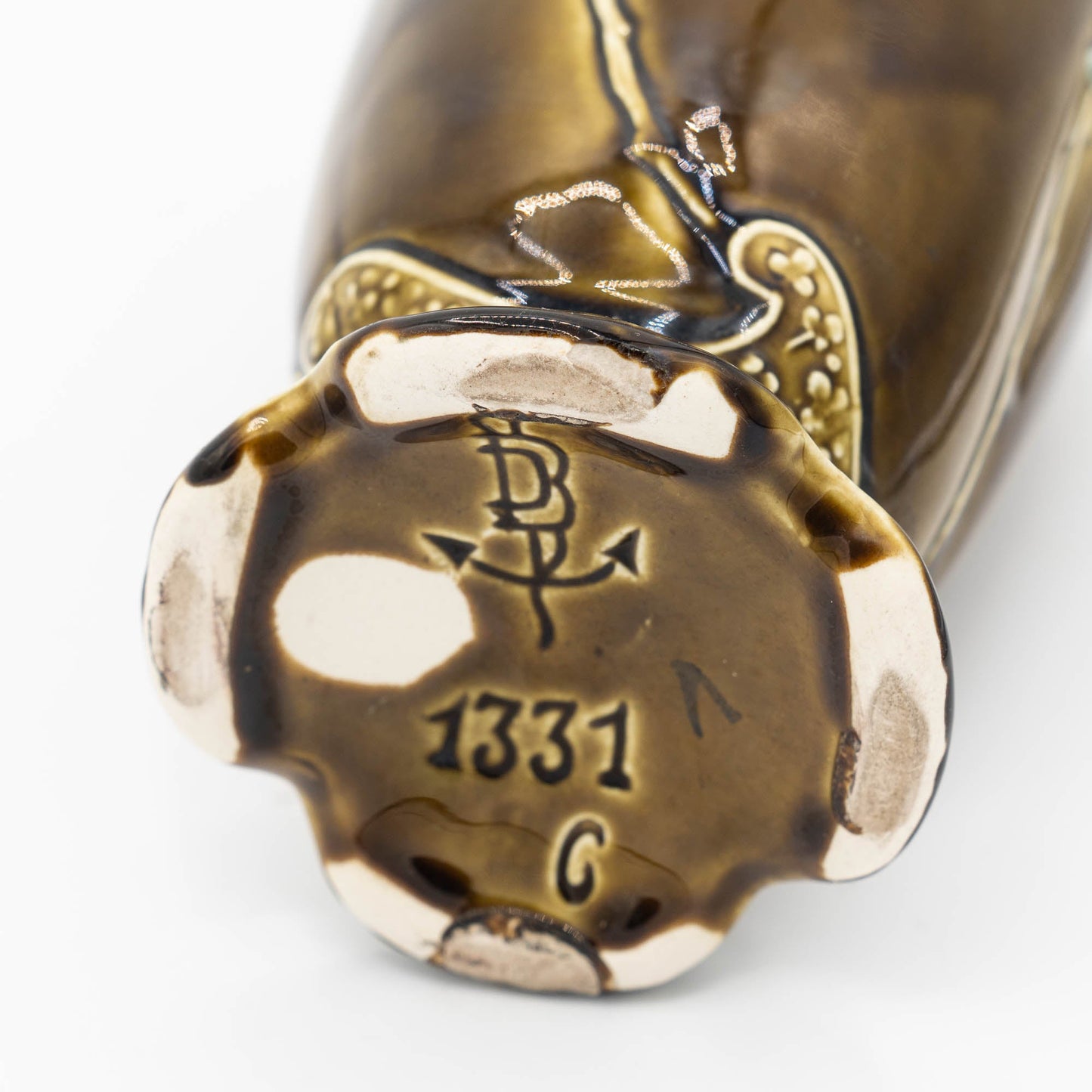
Origin & Maker
A.G. de Bruyen was a prominent French faïencerie based in Fives-Lille, an industrial suburb of Lille in northern France. Operating during the late 19th century, the company became renowned for its stunning barbotine creations, a type of majolica pottery celebrated for its richly coloured glazes and intricate, hand-applied floral motifs.
The firm thrived during the height of the Art Nouveau movement, which emerged in the late 1800s and sought inspiration from nature's organic forms. De Bruyen’s work reflected this aesthetic beautifully, with vases, pitchers, and decorative objects adorned with cascading flowers, delicate vines, and bold, flowing lines. Their pieces often featured striking colour palettes, combining deep greens, vibrant pinks, and earthy tones that perfectly captured the movement’s ethos.
De Bruyen’s faïencerie was an integral part of Fives-Lille’s artistic heritage, contributing to the region’s reputation as a hub of decorative arts and ceramics. Today, their creations are highly sought after by collectors and admired for their craftsmanship and timeless appeal. Each piece stands as a testament to the skill and vision of the artisans who brought the natural world to life through clay and glaze.
Blog posts
View all-

A Serendipitous Morning at the Rue de Bretagne ...
There are few joys in life that match the thrill of stumbling upon a hidden treasure, and for me, flea markets hold that magical allure. One of my favourite flea...
A Serendipitous Morning at the Rue de Bretagne ...
There are few joys in life that match the thrill of stumbling upon a hidden treasure, and for me, flea markets hold that magical allure. One of my favourite flea...
-

Emile Bourgeois and "Le Grand Dépôt" in Paris
Recently, I found this stunning Sarreguemines wash set. It was at the Brocante in Belfort, France. On this day, we had got up at 4 AM to be there in...
Emile Bourgeois and "Le Grand Dépôt" in Paris
Recently, I found this stunning Sarreguemines wash set. It was at the Brocante in Belfort, France. On this day, we had got up at 4 AM to be there in...
-

The Legacy of Robert Haviland: A Journey from N...
The story of Robert Haviland porcelain is one of artistry, transatlantic ambition, and enduring heritage. It begins in the mid-19th century when David Haviland, an enterprising New Yorker, founded Haviland...
The Legacy of Robert Haviland: A Journey from N...
The story of Robert Haviland porcelain is one of artistry, transatlantic ambition, and enduring heritage. It begins in the mid-19th century when David Haviland, an enterprising New Yorker, founded Haviland...











